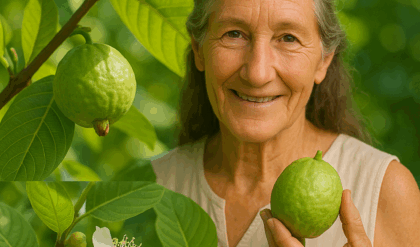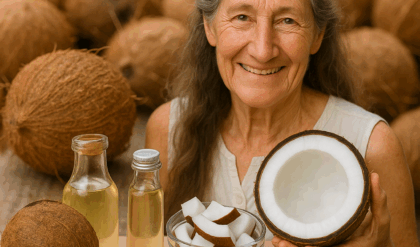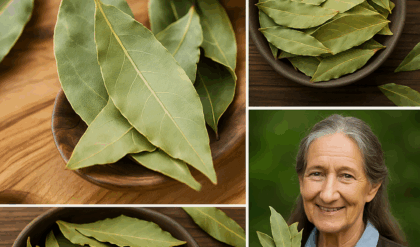Carob, derived from the pods of the Ceratonia siliqua tree, is a naturally sweet and highly nutritious superfood that has been used for centuries for its culinary and medicinal properties. Native to the Mediterranean region, carob is gaining popularity as a healthier alternative to chocolate. Unlike chocolate, carob offers a wide range of health benefits and versatile applications in cooking and skincare. This article delves into the many advantages of carob, highlighting its health benefits, culinary uses, and sustainable qualities.

What is Carob?
Carob comes from the evergreen carob tree, which produces long, leathery pods filled with sweet pulp and seeds. These pods are harvested, dried, and processed into carob powder, chips, or syrup, which are used as natural sweeteners or flavor enhancers in various recipes. Carob is a great alternative to chocolate for those who are sensitive to caffeine or theobromine, as it is naturally caffeine-free and contains no theobromine, making it a healthier option for many.
Health Benefits of Carob
1. Rich in Nutrients
Carob is a nutrient-dense food that is packed with essential vitamins and minerals such as calcium, potassium, magnesium, and iron. It also contains vitamin A, vitamin B2, and vitamin B6, which support overall health, boost the immune system, and help maintain bone and muscle function.
2. High in Fiber
Carob is an excellent source of dietary fiber, which aids in healthy digestion, helps prevent constipation, and supports overall gut health. Its high fiber content also helps regulate blood sugar levels and reduces cholesterol, making it a heart-healthy food option.
3. Low in Fat and Calories
Carob is low in both fat and calories compared to chocolate, making it a great choice for those looking to manage their weight or follow a heart-healthy diet. It provides a guilt-free option to satisfy sweet cravings without the extra fat and calories typically found in chocolate.
4. Naturally Sweet and Gluten-Free
Carob’s natural sweetness eliminates the need for added sugar, making it a great option for those who are reducing their sugar intake. Additionally, carob is naturally gluten-free, which makes it an excellent ingredient for people with gluten sensitivities or celiac disease.
5. Caffeine-Free
Unlike chocolate, carob is caffeine-free, making it an ideal option for children, pregnant women, or individuals who are sensitive to caffeine. Carob offers a satisfying, chocolate-like flavor without the stimulating effects of caffeine.
6. Rich in Antioxidants
Carob is a good source of polyphenols, which are powerful antioxidants that help combat free radicals, reduce inflammation, and protect against chronic diseases. These antioxidants help strengthen the immune system and promote overall health.
Culinary Uses of Carob
Carob’s naturally sweet flavor and versatility make it an excellent substitute for cocoa in a variety of recipes. Here are some ways to incorporate carob into your cooking:
- Carob Powder: Use carob powder as a substitute for cocoa powder in baked goods like brownies, cookies, or cakes for a caffeine-free alternative.
- Carob Chips: Add carob chips to muffins, pancakes, or granola bars as a chocolate alternative.
- Carob Syrup: Drizzle carob syrup over pancakes, waffles, or yogurt for a naturally sweet topping.
- Smoothies and Drinks: Blend carob powder with milk, bananas, and ice for a creamy, chocolate-like smoothie.
Homemade Uses of Carob
Carob is not just for the kitchen – it can also be used in DIY recipes for drinks, snacks, and even skincare. Here are some ideas for homemade carob creations:
1. Homemade Carob Hot Chocolate
Create a comforting and healthy drink by mixing carob powder with warm milk, a pinch of cinnamon, and a natural sweetener like honey. This is a delicious alternative to traditional hot chocolate.
2. Carob Energy Bars
Combine carob powder, oats, nuts, and dried fruits to create no-bake energy bars. These bars make a quick, healthy snack for when you need an energy boost.
3. Carob Ice Cream
Blend carob powder with frozen bananas, almond milk, and a splash of vanilla to create a creamy, dairy-free ice cream that is both indulgent and guilt-free.
4. Homemade Carob Syrup
Simmer carob pods with water and a natural sweetener like agave syrup. Strain the mixture to create a delicious syrup that can be used in baking or as a topping for pancakes and desserts.
5. DIY Face Mask
The antioxidants and vitamins in carob make it a great addition to homemade skincare. Mix carob powder with honey and yogurt to create a nourishing face mask that can help cleanse, hydrate, and protect your skin.
Precautions and Considerations
While carob is generally safe for consumption, there are a few points to keep in mind:
- Moderation: While carob is low in calories and fat, consuming it in large quantities may contribute to weight gain. Moderation is key to maintaining a balanced diet.
- Allergies: Although rare, some individuals may have allergies to carob or related legumes. If trying it for the first time, it is recommended to start with small amounts to test for any allergic reactions.
Environmental and Sustainability Benefits
Carob trees are hardy, drought-resistant, and require minimal care, making them a sustainable crop for arid regions. Their ability to thrive in poor soil conditions and prevent erosion makes them beneficial to the environment. By choosing carob, you can support eco-friendly agriculture and reduce reliance on less sustainable food sources.
Final Thoughts
Carob (Ceratonia siliqua) is a nutrient-rich and versatile superfood with a wide range of health benefits and culinary applications. Its naturally sweet flavor, caffeine-free profile, and antioxidant properties make it an excellent alternative to chocolate and a valuable addition to any diet. Whether used in baked goods, drinks, or skincare, carob offers a delicious and sustainable way to enhance your well-being. Embrace the benefits of this Mediterranean superfood and incorporate it into your daily routine for a healthier, eco-friendly lifestyle.
4o mini





